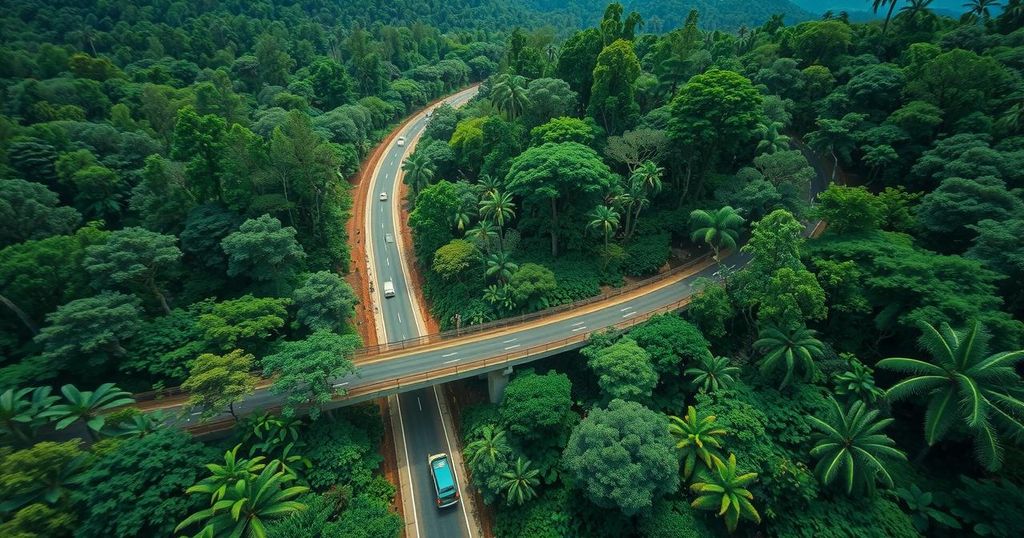The Amazon rainforest is facing outrage as eight miles of trees are cleared for a highway meant for the COP30 Climate Summit. The government defends the project as necessary for traffic relief, but environmentalists raise concerns about its impact on biodiversity. Local residents express dissatisfaction and worry about being cut off from essential services due to this development.
Recent reports highlight significant deforestation in Brazil’s Amazon rainforest, where eight miles of thick vegetation have been cleared for a new four-lane highway intended to accommodate over 50,000 visitors for the upcoming COP30 Climate Summit in Belem. Drone footage depicts the destruction, raising alarms among environmentalists and locals about the ecological repercussions of constructing such infrastructure in one of the world’s most biodiverse regions.
The government asserts that the highway will reduce traffic congestion in Belem, hosting the critical climate event. However, critics emphasize the proposed road threatens the Amazon’s rich biodiversity and questions its compatibility with the eco-friendly intentions behind the climate summit.
In defense of the construction project, Adler Silveira, the state government’s infrastructure secretary, characterized the highway as “an important mobility intervention” and called it a “sustainable highway” aimed at benefiting the local population during COP30. Brazilian President Luiz Inacio Lula da Silva further noted that the summit will focus on the Amazon’s needs and governmental efforts to protect it.
Nevertheless, local residents express dissatisfaction with the government’s actions. Claudio Verequete, a local farmer, lamented the loss of crops and financial stability due to the new road’s construction. He also underscored the potential isolation of the local community from essential services, asserting, “For us who live on the side of the highway, there will be no benefits.”
The decision to develop the highway underscores a broader tension between environmental protection and infrastructural development, particularly in sensitive ecological zones like the Amazon rainforest. The ongoing developments prompt reflection on the implications of prioritizing accessibility in the face of potential environmental degradation.
In summary, the construction of a four-lane highway in the Amazon for the COP30 Climate Summit has ignited widespread outrage due to significant deforestation and potential harm to the region’s biodiversity. While government officials advocate for the road as a vital infrastructural project, local communities remain deeply concerned about the detrimental effects on their livelihoods and the environment. This situation highlights the complex balance between development initiatives and the need for ecological conservation, particularly in critical habitats such as the Amazon.
Original Source: m.economictimes.com




